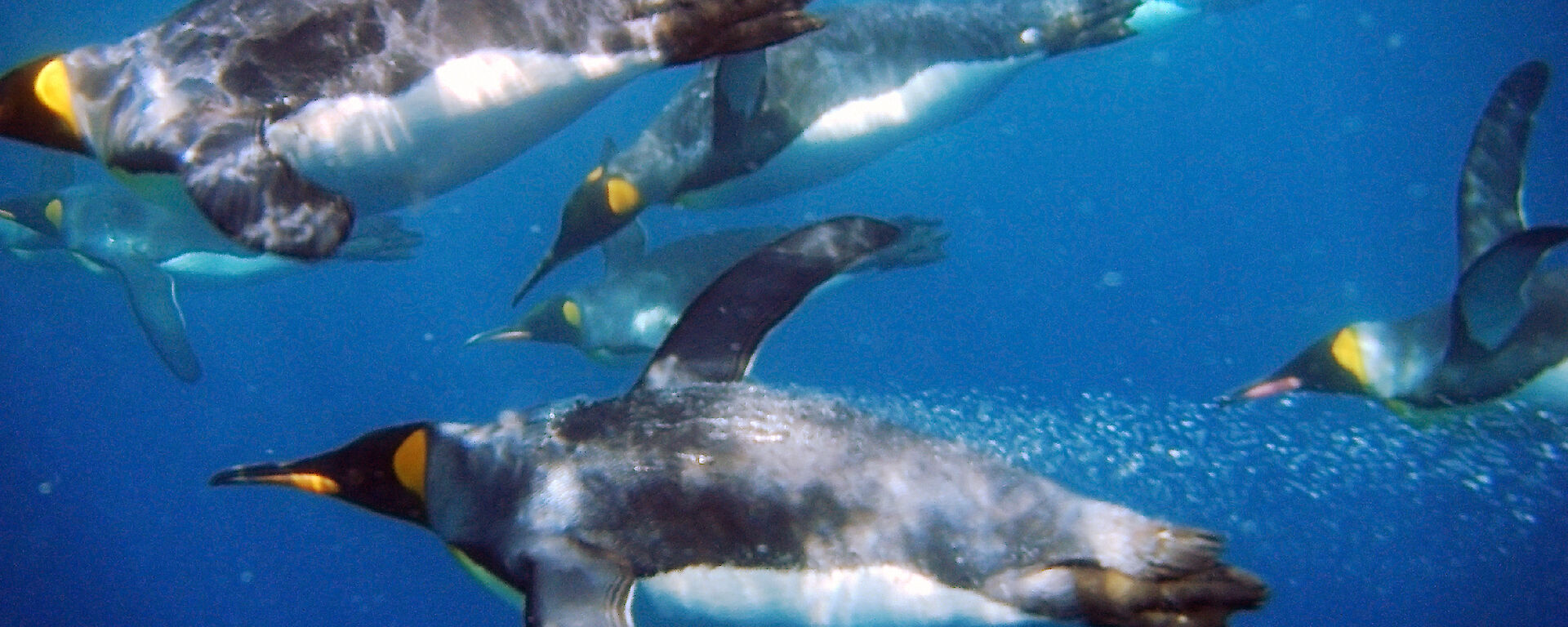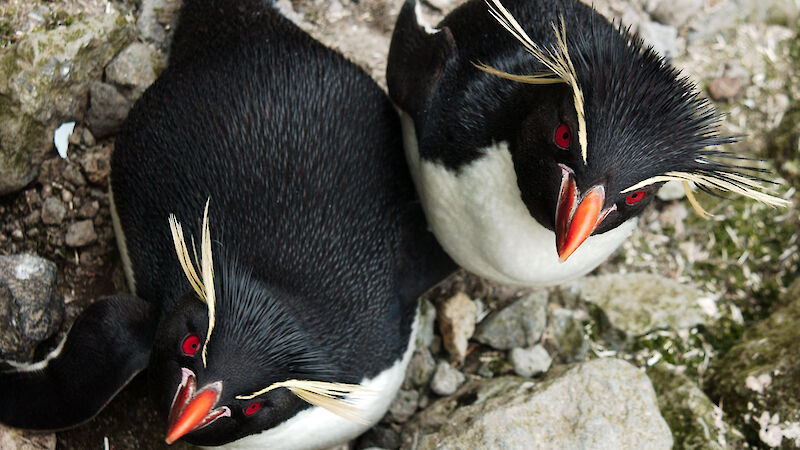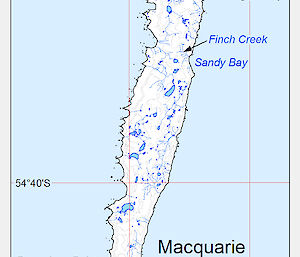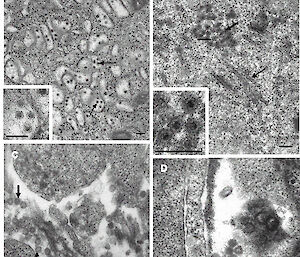Scientists have discovered that ticks associated with penguins on Macquarie Island contain four new viruses, whose closest relatives are found in the Northern Hemisphere.
The four ‘arboviruses’ — viruses transmitted by arthropods (which include insects and ticks) — were identified in the globally distributed seabird tick Ixodes uriae, infesting colonies of King, royal and rockhopper penguins on the sub-Antarctic island.
While the viruses belong to groups that include the West Nile virus, Bluetongue and the unpleasant sounding Rift Valley fever and Crimean-Congo hemorrhagic fever viruses, project leader Professor Andreas Suhrbier, of the Queensland Institute of Medical Research, says the penguin viruses are ‘fairly distantly related’ to anything that harms humans or livestock, and unlikely to pose an imminent health threat.
This is good news for the increasing numbers of tourists visiting Antarctica whose immune systems may be compromised because of age, illness or immunosuppressive drugs for cancer or organ transplant. Such individuals are often more susceptible to infection by unusual agents.
'Even though these are seabird viruses, immunosuppressed people might become infected if they were bitten by a tick,' Professor Suhrbier says.
'However, Ixodes uriae usually prefers to feed on birds, rather than humans, so the chances of being bitten are low.'
The viruses do not appear to pose a threat to the penguin populations either, as penguin numbers continue to recover following an end to their rendering for oil in 1933.
Interestingly, the viruses were closely related to viruses found on the other side of the world. One virus isolated from ticks in a rockhopper colony at Catch Me Cave, on the northern tip of the island, was closely related to the seemingly harmless Uukuniemi virus, which infects cattle and some seabirds in Finland. Another virus associated with King penguins at Sandy Bay was related to Broadhaven virus, which infects seabirds in Scotland.
'This research appears to demonstrate that large geographical distances do have an important role in the evolution of these viruses,' Professor Suhrbier says.
One likely explanation for this long distance relationship is that the ticks harbouring these viruses are carried by migratory seabirds, such as sooty terns and Arctic shearwaters. These birds visit Macquarie Island each year and travel to every continent during their annual migration. The ticks and their viruses could thus find their way to most seabird populations in the world.
'One might also speculate that if the migration patterns of these seabirds change, as a result of climate change, these viruses might come into contact with new bird or animal populations, with some potential to cause problems,' Professor Suhrbier says.
The research team isolated the viruses from ticks collected under rocks in the ‘very large, smelly and wet bogs’ surrounding the King, royal and rockhopper penguin colonies. Gentoo penguin colonies were also searched but no ticks were found associated with them.
'Gentoos move their colony every year by up to 100m, which probably limits tick infestation, as the ticks drop off when the birds go out to sea, and as young penguins mature,' he says.
Viruses were extracted from the macerated ticks back in the laboratory and identified by transmission electron microscopy and genome sequencing. Viruses belonging to four of the seven genera of viruses containing arboviruses — flavivirus, orbivirus, phlebovirus and nairovirus — were subsequently identified.
Transmission electron microscopy (Figure 2, above) reveals the flavivirus (A) isolated from ticks in a King penguin colony, inside the cytoplasmic vesicles of infected cells. The ‘enveloped’ virus (an outer membrane surrounds the genome) is about 45nm in diameter. (B) shows a non-enveloped orbi- or colti-virus from King penguin-associated ticks, about 65nm in diameter, in the cell cytoplasm. (C) was identified as a phlebovirus (in the family Bunyaviridae) from a rockhopper colony. These enveloped viruses are spherical, 80–100nm in diameter and occur outside cells. The nairovirus, also from the Bunyaviridae family (D), was found in the royal penguin colony. Scale bars are 200nm.
While similar viruses were isolated from Ixodes uriae on Macquarie Island some 30 years ago, no sequence data is available for them. As a result, the four arboviruses isolated by Professor Suhrbier and his team were considered to be new to science and have been named after the places where the ticks were collected — Sandy Bay, Catch Me Cave and Finch Creek (the fourth was almost identical to Gadgets Gully virus, isolated by others).
As a next step in his research Professor Suhrbier is keen to obtain frozen serum samples from Antarctic and sub-Antarctic cruise passengers who develop unexplained fevers, likely to be of viral origin, after visiting seabird colonies and being bitten by a tick.
This research was funded by the Australian Antarctic Division.
WENDY PYPER
Corporate Communications, AAD





